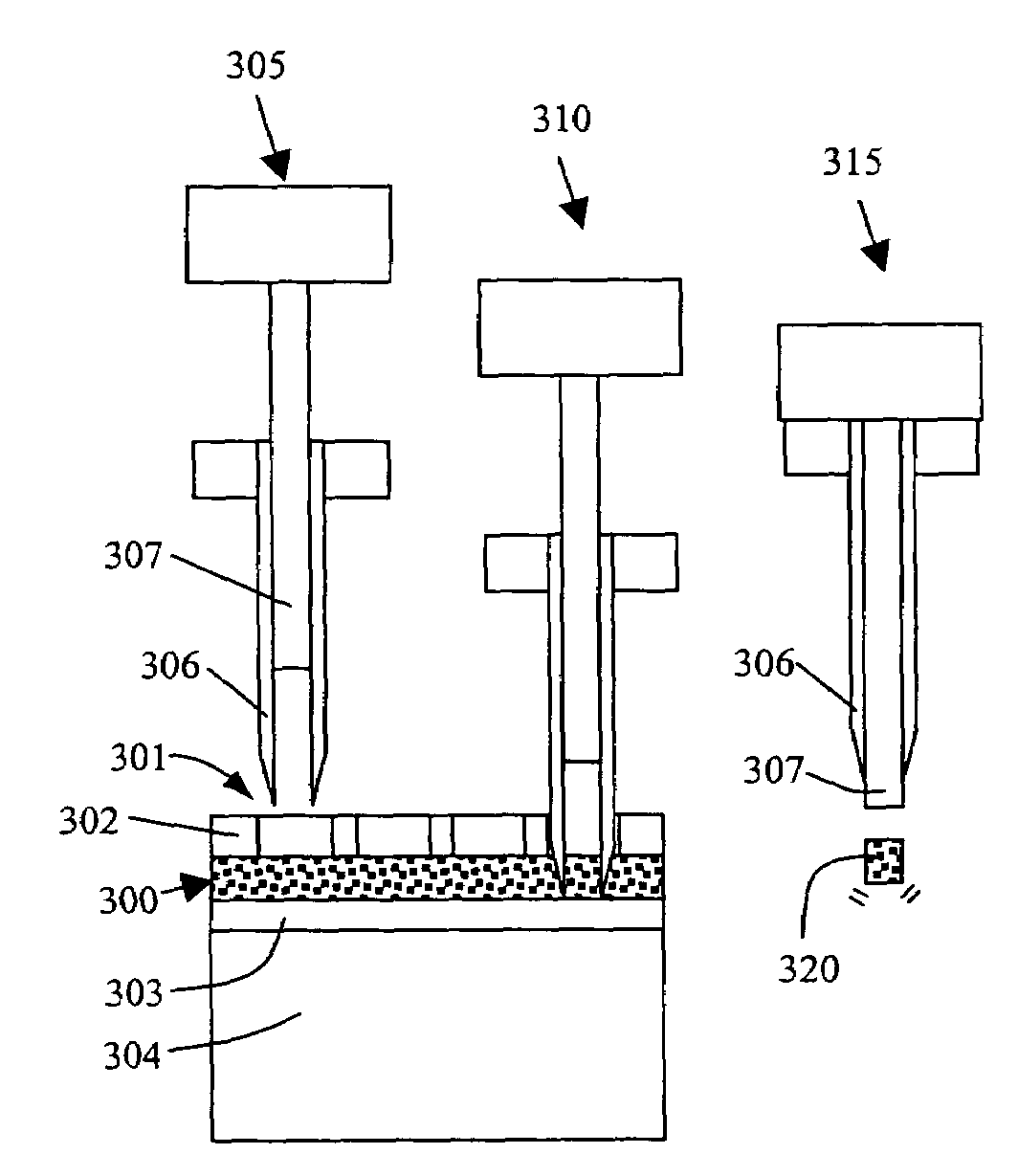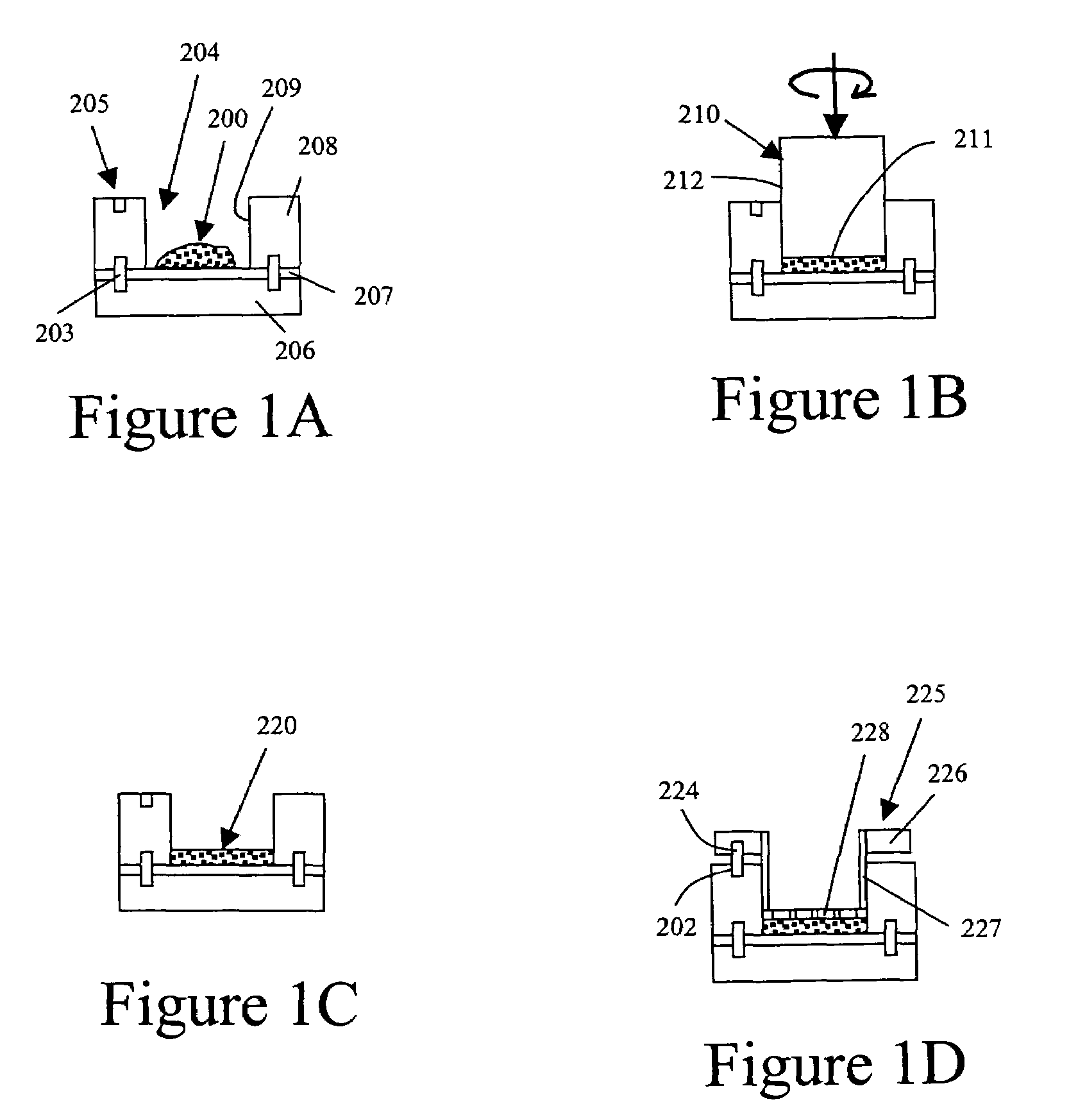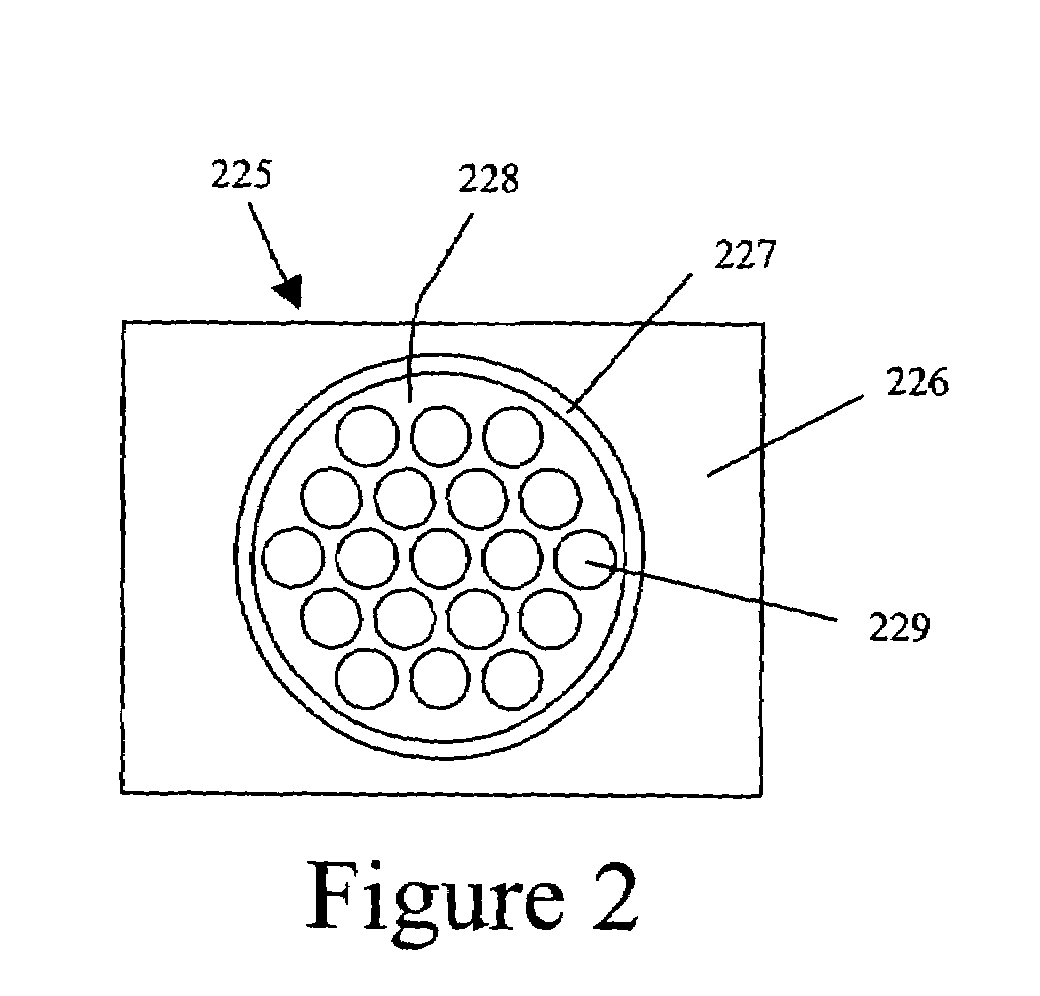Methods of manipulating small amounts of solids
a technology of solids and methods, applied in the direction of liquid/fluent solid measurement, chemical/physical process, biological material analysis, etc., can solve the problem that the physical characteristics of the substance cannot be controlled using solution-based dispensing techniques, and the methods and devices that are used for manipulating small amounts are not amenable to rapid or automated manipulation
- Summary
- Abstract
- Description
- Claims
- Application Information
AI Technical Summary
Benefits of technology
Problems solved by technology
Method used
Image
Examples
example 1
Manipulating Solids by Coring a Plug of Powder From a Powder Bed
[0078]Solids, such as those in the form of a powder, can be manipulated using systems and methods described for the present invention. For example, solids in the form of fine powders comprising particles having an average size of less than about 200, 150, 100, 50, 10, 5, 1, 0.1, or 0.01 micrometers can be compressed and dispensed in controlled amounts as plugs without the use of solvents, high pressures, or temperatures that may affect the form of the solids. As will be apparent to those of skill in the art, the particular amount of pressure that can be used to provide such plugs will depend on the particular compound and its form. However, that amount is readily determined using little, if any, routine experimentation. Examples of such pressures include, but are not limited to, less than about 30, 20, 10, 5, or 2 psi. The use of such low pressures typically avoids physical form changes such as loss of crystallinity or ...
example 2
Manipulating Solids by Extruding a Plug of Powder
[0102]This example illustrates an alternative method and apparatus to produce a plug of powder. The average particle size of the powder should be less than about 200, 100, 50, 10, 5, 1, 0.1, or 0.01 micrometers. This embodiment has two significant advantages over the method described in Example 1. It requires less time and labor since a uniform powder bed does not have to be prepared, and secondly, it requires less powder to create the same number of plugs. In other words, this embodiment may prove to be more efficient and less wasteful than coring a plug of powder.
[0103]In a specific embodiment of this method and apparatus, plugs of powder are fabricated via the following process. First, as shown in FIG. 10A, a known mass of powder 501 (e.g., less than about 1 gram, 500 mg, 100 mg, 25 mg, 1 mg, 500 micrograms, 250 micrograms, or 100 micrograms) is dispensed into a cylindrical source chamber 502 with source piston 503 located in a dow...
example 3
Manipulating Solids by Extruding Multiple Plugs of Powder Simultaneously
[0112]This example is based on a similar method and apparatus as Example 2 except that it demonstrates a new method and apparatus for extruding multiple plugs of powder simultaneously. To begin, FIG. 14A shows that a known mass of powder 640 (e.g., less than about 1 gram, 500 mg, 100 mg, 25 mg, 1 mg, 500 micrograms, 250 micrograms, or 100 micrograms) is dispensed into a source chamber 642. Then, in FIG. 14B, assembly 648 comprising pneumatic cylinder 651 and source piston 649 is attached above source chamber 642. At the base of source chamber 642 is slide plate 645 which is in between source block 641 and keeper 656. Powder 640 is initially compressed inside source chamber 642 against slide plate 645 by supplying air to pneumatic cylinder 651 at typically about 5 to about 50 psi.
[0113]FIG. 14B also shows that source piston 649 has square cross section 665 sized to fit precisely into square source chamber 642 (ro...
PUM
| Property | Measurement | Unit |
|---|---|---|
| particle size | aaaaa | aaaaa |
| angle | aaaaa | aaaaa |
| mass | aaaaa | aaaaa |
Abstract
Description
Claims
Application Information
 Login to View More
Login to View More - R&D
- Intellectual Property
- Life Sciences
- Materials
- Tech Scout
- Unparalleled Data Quality
- Higher Quality Content
- 60% Fewer Hallucinations
Browse by: Latest US Patents, China's latest patents, Technical Efficacy Thesaurus, Application Domain, Technology Topic, Popular Technical Reports.
© 2025 PatSnap. All rights reserved.Legal|Privacy policy|Modern Slavery Act Transparency Statement|Sitemap|About US| Contact US: help@patsnap.com



